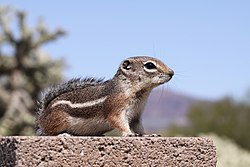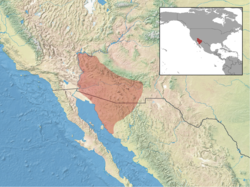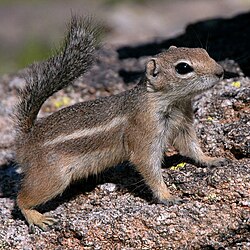| Harris's antelope squirrel | |
|---|---|
 | |
| Scientific classification | |
| Kingdom: | Animalia |
| Phylum: | Chordata |
| Class: | Mammalia |
| Order: | Rodentia |
| Family: | Sciuridae |
| Genus: | Ammospermophilus |
| Species: | A. harrisii |
| Binomial name | |
| Ammospermophilus harrisii | |
 | |
Harris's antelope squirrel (Ammospermophilus harrisii) is a species of rodent in the family Sciuridae. [2] It is found in Arizona and New Mexico in the United States, and in Sonora in Mexico. They are adapted to hot weather conditions including a technique called "heat dumping". They have a wide-ranging diet, including both vegetation, insects, small rodents and carrion.

